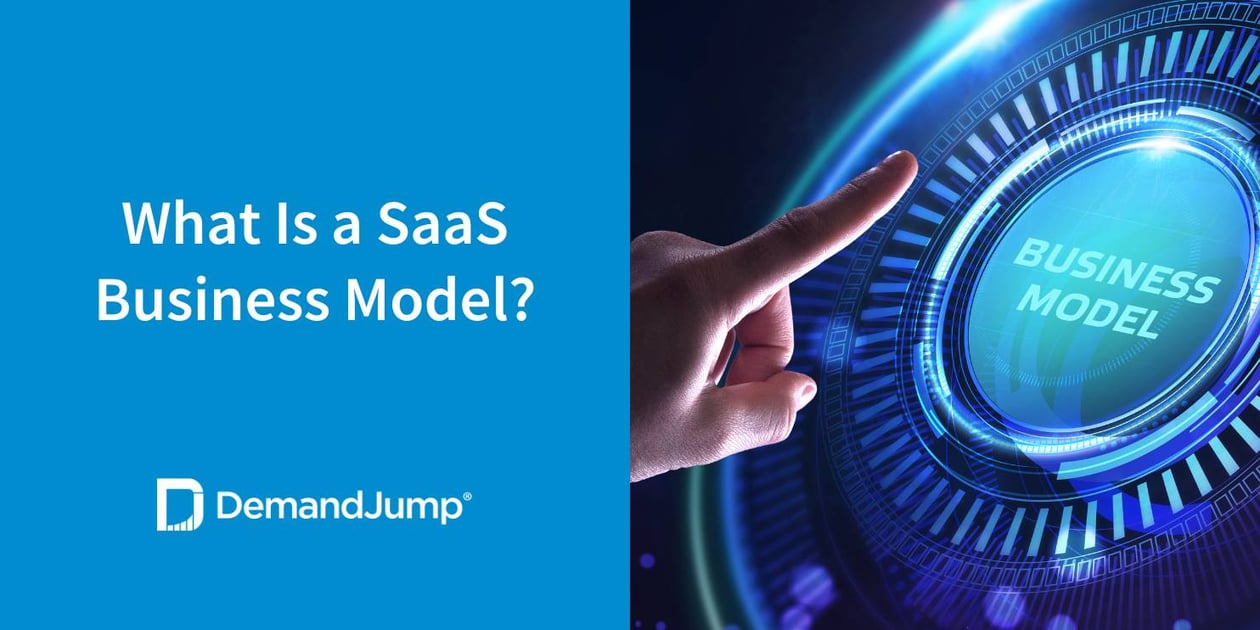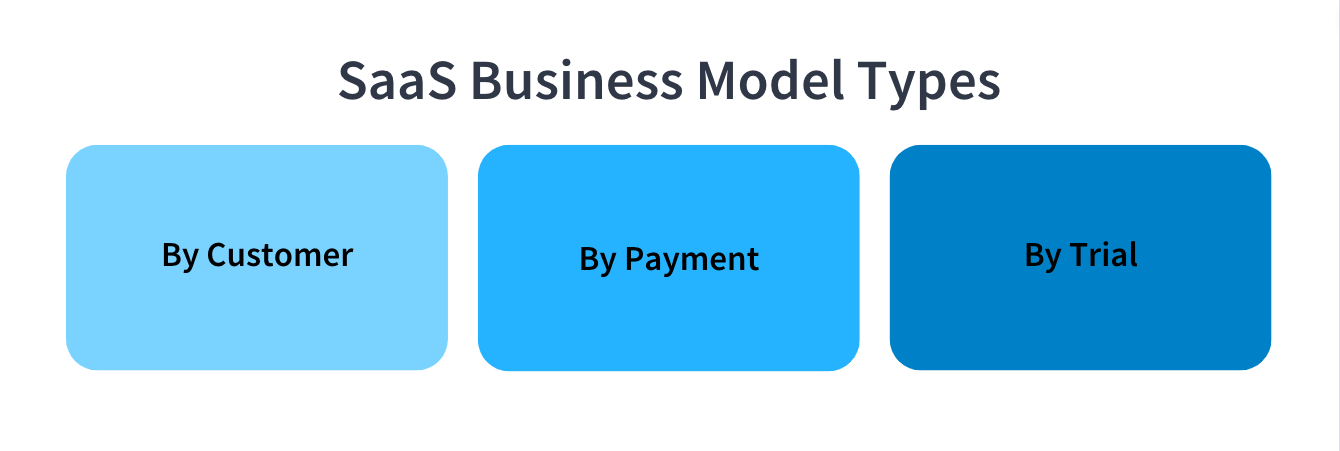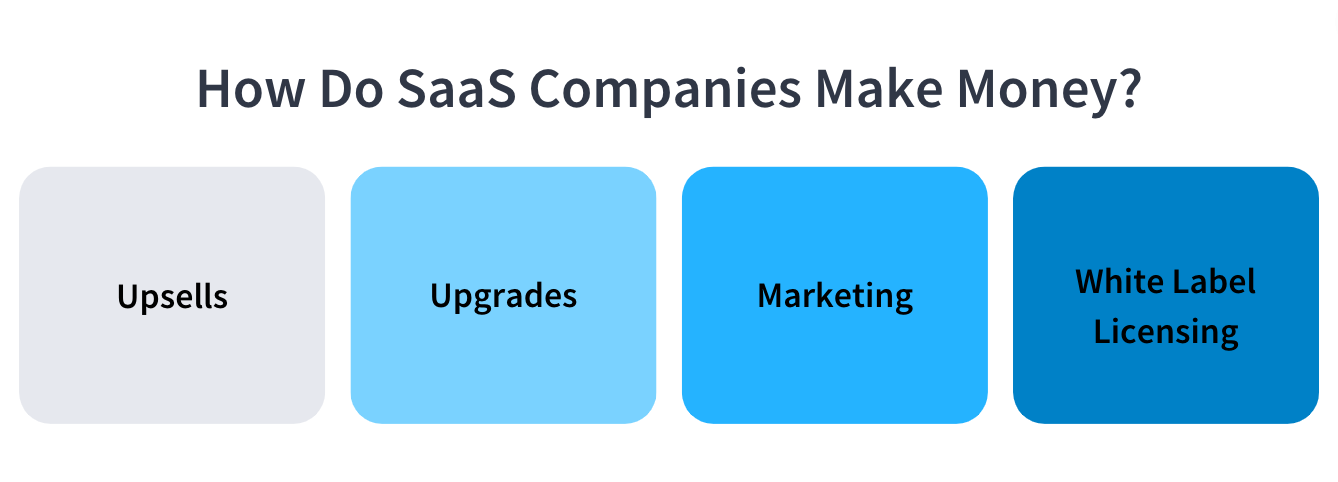What Is a SaaS Business Model?
November 30, 2022 •Erica Kempf

Software as a Service (SaaS) companies use a variety of business models, depending on what they provide and who their target audience is. All of them use SaaS marketing as an important part of their businesses, though, since lead generation is a necessary part of any B2C or B2B SaaS business model.
In this blog we’ll explore the different types of business models SaaS companies use, how they generate profit, and what variety of revenue streams can be incorporated.
What Are the Different SaaS Business Models?
Since a business model is the plan a business makes for generating profit, they can be categorized in a bunch of different ways. Here are some of the types of SaaS business models out there, broken down by common frameworks used to come up with the model.
By Customer Type
When a SaaS company is setting up a business plan, it's important for them to consider who their target market is. Will they be making a product to sell to other businesses or directly to consumers?
- B2B SaaS Business Model - Business-to-business companies create, market, and sell products to other businesses. For a SaaS company, this might look like making software to manage inventory, help employees provide better customer service, or market their product.
- B2C SaaS Business Model - Business-to-consumer companies sell their services directly to individual people for their use. For a SaaS company, this could be a streaming platform for podcasts, an app for tracking exercise, or a way to find the nearest electric car charging station.
By Payment Style
Since the purpose of a business model is to plan how revenue will be generated, it makes sense to consider how and when you will get paid.
- Subscription - Many SaaS companies sell their product as a subscription, where customers pay an ongoing fee to have access to the platform. It is common for these subscriptions to be either monthly or yearly, and this is a good way to ensure ongoing revenue over time.
- Pay-to-Use - Other SaaS software businesses choose to make their products available on a pay as you go system. This works well for services that may be needed only once or very sporadically, like tax filing software.
By Trial Type
One of the things that sets SaaS companies apart from other business types is that they nearly always give away their product for free as a trial for potential customers before they commit to purchasing.
- Free Trial - Offering the full version of what your company has to offer, but for a limited time, is one way to incentivise someone to buy it. They get to fully test and explore the benefits and decide if they want to purchase.
- Freemium - Other businesses go the route of a freemium version of their product—a limited version of their offerings available permanently. This way potential customers can really use the service long-term and decide if the extra bells and whistles of the full version are worth the investment for them.
All these types of business models are mix and match. This means you could be a B2B, subscription based platform with a freemium option (which just so happens to be what DemandJump uses as our business model). These are just helpful categories to get you thinking about how to structure your business.
How Do SaaS Companies Make Money?

The bread and butter of most SaaS companies is recurring revenue from customer subscriptions or pay-per-use. These sales are generally what pay the bills to make the business operate. But there are other potential revenue sources that successful SaaS companies can also leverage, including:
- Upsells - Selling existing customers additional services is another option to increase revenue. This could include things like extra customer service support or more detailed reporting.
- Upgrades - Providing more features, storage, speed, or data as higher tiers within a SaaS business is another common way to make money.
- Marketing - Popular SaaS companies with many users can sell marketing opportunities to other businesses that want to reach these same people.
- White Label Licensing - If a customer likes your product so much they want to use their own branding to customize it even further, offering white label licensing is a possibility for additional monetization. An example of this could be a bank who uses an appointment scheduling program for their clients but wants the customer interface to have their own bank branding instead of the branding of the SaaS scheduler company.
One of the benefits of a SaaS business model is that it gives companies an opportunity to decide which of the many options they want to incorporate into their work. Thinking through everything that’s available and deciding which is the best fit for your specific offering is an important step in business planning.
DemandJump: Your SaaS Company’s Marketing Must-Have
Here at DemandJump, we know SaaS since it’s what we do, too! Customizing your business model and developing your product is only the beginning of what it takes to be successful. Getting the word out about what you do and why it matters can be an even bigger hurdle. That’s why we’ve developed our industry-leading Pillar-Based Marketing strategy for getting you on page one of search engines. Showing up online to the people who are searching for exactly what you have to offer is a huge part of what will make your SaaS company a success, so click the button below to get started now!
Featured Articles
Categories
- Attribution Tracking (13)
- Channel Optimization (11)
- Consumer Insights (68)
- Content Marketing (251)
- Data Science (8)
- Digital Marketing (6)
- Digital Transformation (26)
- Enterprise (10)
- Lead Generation (14)
- Market Intelligence (8)
- Marketing Analytics (39)
- Marketing Attribution (57)
- Marketing Management (153)
- Marketing Operations (86)
- Organic Search (222)
- Paid Search (52)
- Pillar-Based Marketing (63)
- Programmatic Advertising (9)
- SaaS Content (14)
- SaaS Marketing (29)
- Search Marketing (111)
- SEO Keyword Research (28)
- SEO Pillar (18)
- SEO Strategy (46)
- SMB (5)
- Website Content (12)


